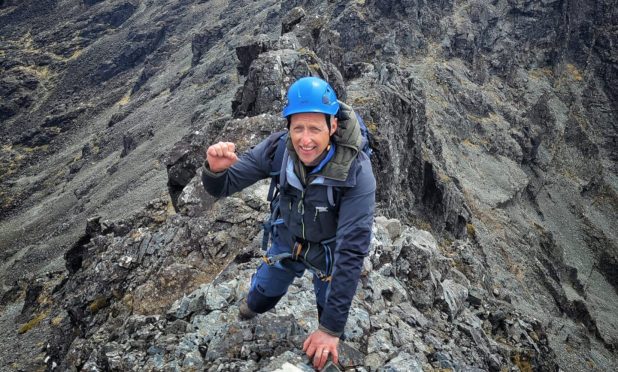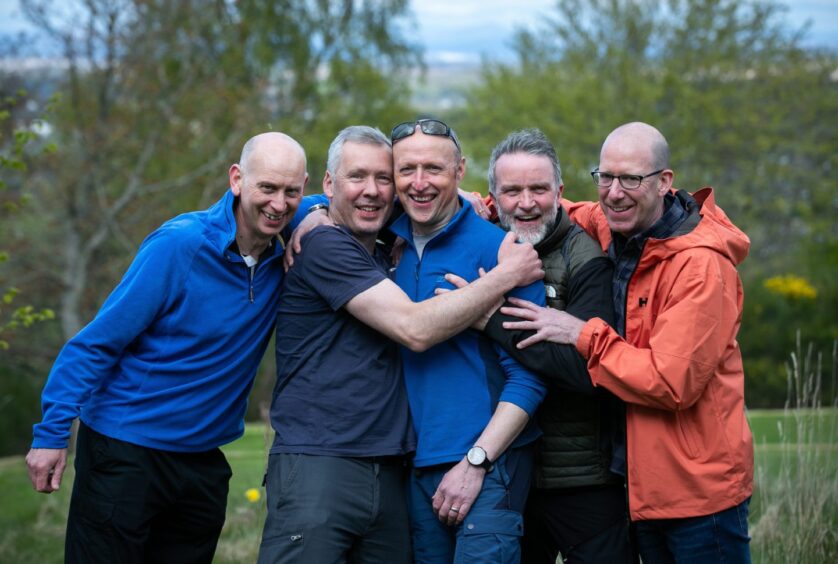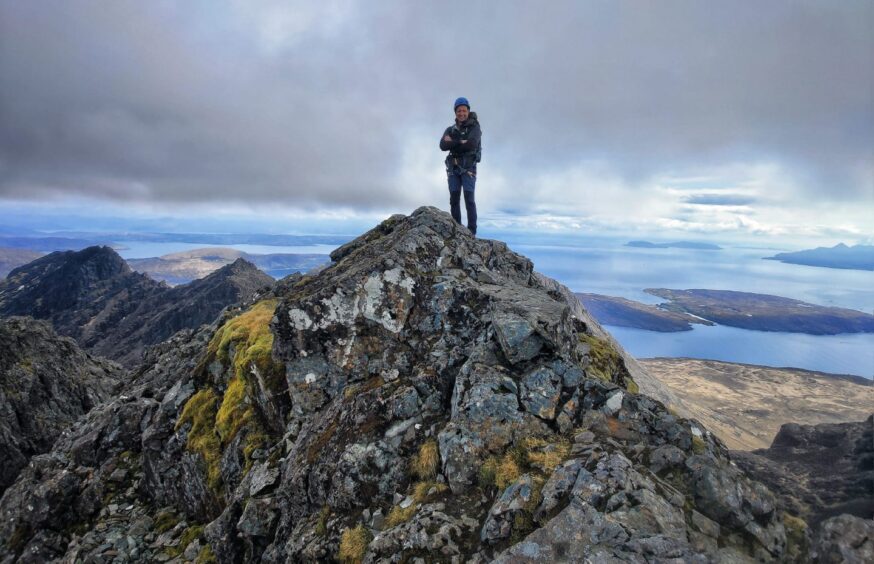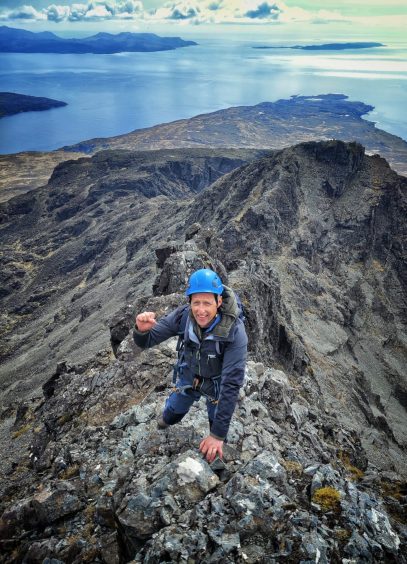
For most of his friends and family, Andy Munro was the fittest guy they knew.
He had always been naturally athletic and by 2019, at 49 years old, had some remarkable sporting achievements under his belt.
He had completed the Barcelona marathon, captained an amateur football team, ran and coached at his local athletics club, and had bagged more than 100 Munros, edging ever closer to his lifetime goal of climbing all 282.
Then, one afternoon, something odd happened.
Andy’s diagnosis
Andy was making an omelette and found he could no longer move his right arm to whisk an egg. After a few seconds, he was able to move again as normal, but he decided to book an appointment with his GP just in case.
What followed was a lengthy string of tests and scans that carried on into the height of the Covid pandemic. One Wednesday morning in 2021, just before he was about to join a work call, a locum GP rang him called to let him know he had been diagnosed with Parkinson’s disease.
“There were obviously a few tears when I first told my wife, daughters, my sister and my mum and dad,” said Andy. “But even that same day, after we’d had a cup of tea and talked about it, we decided to let go of what we couldn’t control and take charge of what we could.”
Parkinson’s is a condition in which parts of the brain become progressively damaged over many years. Symptoms are caused by the loss of dopamine-producing nerve cells in the brain which control movement. Eventually it can make everyday activities such as using a phone or getting dressed very difficult.
Despite the blow of his diagnosis, Andy and his family quickly rallied. He said: “Everybody was ready to help with research and ideas. A positive outlook is definitely the default in my family – I learned that from my dad, who never knows when he’s beaten, which I hope has rubbed off on me.”
Andy’s father Jimmy is still climbing and hiking at 85 years old, completing every Munro around 10 years ago. Andy always intended to follow in his father’s Munro-bagging footsteps, and he became even more determined after his Parkinson’s diagnosis.
Andy said: “It didn’t even cross my mind not to finish the Munros. When people said, ‘you might not be able to do that now’ I said, ‘no chance – I’ll definitely be climbing them all!’”
Climbing with Parkinson’s
In order to achieve his goal, Andy accelerated the amount of Munros he climbed a year.
He said: “I still have around 60 or 70 to go, and I’m starting with the tricky ones while I’m still relatively strong and healthy. Last year I finished the 11 Cuillin Munros on Skye which require ropes and climbing equipment and are quite technical.”
This year, Andy and his friends have set themselves an even more formidable challenge. At the end of the month, six of them will climb all 12 Munros of the North Glen Shiel Ridge in the north-west Highlands in 36 hours – an ascent of 4,300 metres, or 14,108ft. He said: “I’ll be pushing my body to its limits to pull it off, and we’ll be on the go for 12 to 14 hours a day, only stopping to eat and sleep, and then we’ll get going again.
“My fitness is still pretty good, but I have gotten a bit slower. But we’ll all push on and I’m sure we’ll get there.”
Andy and his friends all began hillwalking together after his diagnosis.
“They all have pretty high fitness levels and will be totally fine, although I know I few of them would c**p themselves if you asked them to read a map,” laughed Andy. “But they are all really up for it. One of them, Richie, was a really good friend of mine 25 to 30 years ago, but we lost touch. He heard about my condition and we got talking again, and this person who I hadn’t seen in 20-odd years became my hillwalking buddy. He’s the patter merchant of the group, he’ll keep us going with his bad jokes.”
The remarkable feat will not only help Andy towards his dream of climbing every Munro, but will also raise money for Cure Parkinson’s, a charity that has funded millions of pounds of research into the disease.
“They are purely focused on finding a cure and have done some great work already, which is why I wanted to raise money for them. It might help me 10 years down the line or, if it’s too late for me, it might help someone else in the future,” explained Andy.
“Also, I wanted to prove to myself that I could still do something like this. And I wanted to set an example for my kids and to other people that, when something like this comes along, you don’t have to give into it. I don’t want to patronise and say there are miracle cures, but you can still live with it, and live pretty well with it, if you stay healthy and active.”
To donate to Andy’s fundraiser, go to justgiving.com/team/glenshielwarriors

Enjoy the convenience of having The Sunday Post delivered as a digital ePaper straight to your smartphone, tablet or computer.
Subscribe for only £5.49 a month and enjoy all the benefits of the printed paper as a digital replica.
Subscribe © Andrew Cawley
© Andrew Cawley
